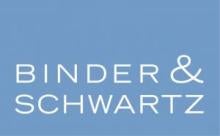The Second Circuit recently joined the Third, Fifth, Sixth, Seventh, Ninth and Eleventh circuits in adopting the “continuous concealment” doctrine for Chapter 7 bankruptcy proceedings where denial of discharge is sought pursuant to 11 U.S.C. § 727(a)(2)(A). Section 727(a)(2)(A) precludes Chapter 7 debtors from discharging their debts where it is shown that the debtor concealed property “within one year before the date of the filing of the petition,” and “with intent to hinder, delay, or defraud a creditor.” Under the continuous concealment doctrine, endorsed by the Second Circuit for the first time in Gasson v. Premier Capital, LLC, 43 F.4th 37 (2d. Cir. 2022), a debtor may still be found to have intentionally concealed property under § 727(a)(2)(A) where the concealment began earlier “as long as the debtor allowed the property to remain concealed into the critical year” and maintained “an improper subjective intent during the year before bankruptcy.”[1] This ruling provides clarity on the applicability of the continuous concealment doctrine to § 727(a)(2)(A) for bankruptcy courts in the Second Circuit, some of whom were already following the doctrine as articulated in other circuits,[2] and it has important implications for both creditors and debtors as they seek to litigate the dischargeability of debts in the Second Circuit going forward.
Gasson involved a debtor-appellant named Anthony Gasson, a self-employed financial consultant who began facing financial trouble in the mid-1990s after he personally guaranteed the debts of three failed businesses. Gasson ultimately became liable for the debts of the companies, resulting in the entry of three judgments against him for a combined total of nearly $600,000. In the midst of his financial turmoil but before the judgments had been entered, Gasson and his wife attempted to “make a fresh start” by forming a consulting business known as Soroban Inc. (“Soroban”).[3] Gasson utilized Soroban to continue providing his financial consulting services, although the company was nominally owned by his wife who also served as chair of Soroban’s board. Gasson’s wife, however, had little to no involvement in the company’s day-to-day operations and continued to work as a full-time nurse during the relevant time period. Gasson, on the other hand, retained control over the company’s operations and finances and was its sole employee. By 2009, Soroban was reporting an annual revenue in excess of $200,000, the majority of which purportedly was derived from Gasson’s consulting services.
By 2011, creditor-appellee Premier Capital LLC (“Premier”) had acquired the judgments entered against Gasson, and it commenced efforts to collect on them. On September 27, 2012, however, Gasson filed a Chapter 7 bankruptcy petition in the Southern District of New York seeking to be discharged of his personal debts. Gasson did not report his interest in Soroban on his bankruptcy schedule or in his response to Premier’s informational subpoena served on him just four months before he filed his petition. As a result, Premier commenced an adversary proceeding against Gasson in the bankruptcy case arguing, inter alia, that Gasson’s debts should not be discharged pursuant to 11 U.S.C. § 727(a)(2)(A) because he had concealed his ownership interest in Soroban with an intent to hinder his creditors. Following a trial, the bankruptcy court held that § 727(a)(2)(A) applied to bar discharge in Gasson’s case because although Soroban had been formed in 2001, Gasson’s efforts to conceal his interest in Soroban from creditors had persisted into the year preceding commencement of his bankruptcy case. Gasson appealed the bankruptcy court’s denial of the discharge order to the district court, which affirmed, and then to the Second Circuit arguing, inter alia, that the bankruptcy court erred in applying the continuous concealment doctrine to the facts of his case.
The Second Circuit began its opinion in Gasson by affirming the bankruptcy court’s conclusions that Gasson had an ownership interest in Soroban and that he had concealed this interest with the intent to hinder his creditors. Moving on to whether Gasson’s concealing conduct fell within the relevant one-year time period, the Court acknowledged that other circuits follow the continuous concealment doctrine in this context, and it went on to formally adopt the Third Circuit’s articulation of the doctrine set forth in Rosen v. Bezner, 996 F. 2d 1527, 1531 (3d Cir. 1993) as law of the Second Circuit. Under this articulation of the doctrine, “a concealment will be found to exist during the year before bankruptcy even if the initial act of concealment took place before this one year period as long as the debtor allowed the property to remain concealed into the critical year,” and provided that “the party objecting to discharge must still prove an improper subjective intent during the year before bankruptcy.”[4] Turning to Gasson’s case, the Court held that the standard had been satisfied in light of the facts in the record which established that “[Gasson]’s way of conducting his financial affairs persisted into the year prior to [his] bankruptcy filing.” [5] This included Gasson’s failure to report his interest in Soroban in his response to Premier’s subpoena or in his schedules filed in connection with the bankruptcy.
Looking forward, Gasson establishes that Chapter 7 debtors who have a history of concealing property interests with the intent of hindering, defrauding, or delaying their creditors will have a harder time relying on the one-year limitation period set forth in § 727(a)(2)(A) to defend against a creditor who opposes discharge in the Second Circuit. Although some lower bankruptcy courts in the Second Circuit had already been following the continuous concealment doctrine, Gasson’s formal adoption of the doctrine as law of the Circuit strengthens the ability of creditors to rely on it when opposing discharge pursuant to § 727(a)(2)(A).
FOOTNOTES
[1]Gasson v. Premier Cap., LLC, 43 F.4th 37, 45 (2d Cir. 2022) (quoting Rosen v. Bezner, 996 F.2d 1527, 1531, 1533 (3d. Cir. 1993).
[2]See, e.g., Flushing Savings Bank, F.S.B. v. Vidro (In re Vidro), 497 B.R. 678, 690 (Bankr. E.D.N.Y. 2013); Pereira v. Gardner (In re Gardner), 384 B.R. 654, 663 (Bankr. S.D.N.Y. 2008); Nate B. & Francis Spingold Found., Inc. v. Halperin (In re Halperin), 215 B.R. 321, 331 (Bankr. E.D.N.Y. 1997); Congress Talcott Corp. v. Sicari (In re Sicari), 187 B.R. 861, 871-80 (Bankr. S.D.N.Y. 1994).
[3]Gasson, 43 F.4th at 39-40.
[4]Id. at 1533.
[5]Id. (quoting Premier Cap. LLC v. Gasson (In re Gasson), No. 12-23703, 2018 WL 6603737, at *16-17 (Bankr. S.D.N.Y. Dec. 13, 2018)).




 />i
/>i

